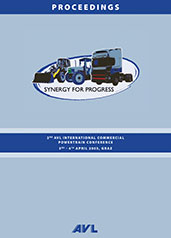Technical Paper
100 Million Smart Assistants on Wheels…
2006-10-16
2006-21-0014
Cars are undergoing major design changes, and typical usage scenarios are already showing significant departures from the main goal. What used to be mostly a transportation means is quickly becoming a mobile micro-world that replicates features, functions and services traditionally available in homes and offices. This paper will identify industry trends in the Driver-Machine-Interface area, and will try to anticipate how quickly and to what extent cars will morph into smart assistants to make the driving experience richer and even more enjoyable than it is today.

